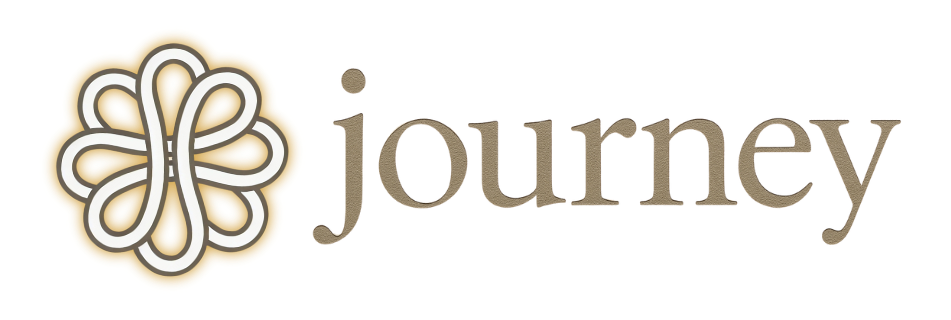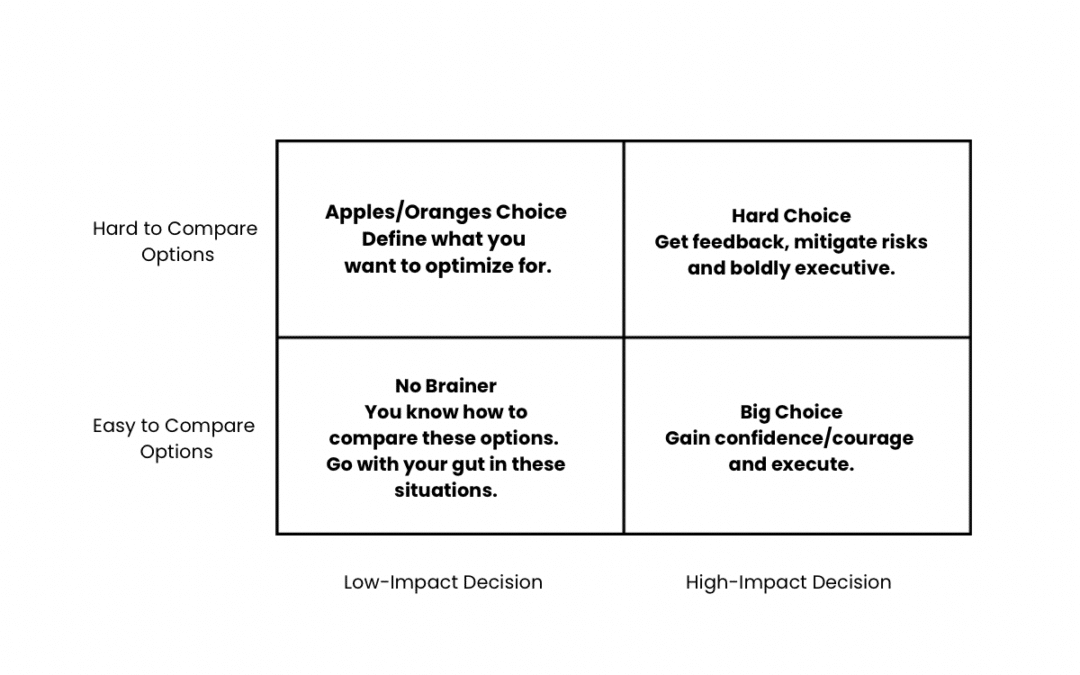Reading Time: 5 minutes
Key Points
- The Hard Choice Model is a structured approach to categorize and address different decision-making scenarios.
- It evaluates decisions based on their impact and the ease of comparing available options.
- This model can streamline your decision-making process, ensuring that you approach each decision with the right mindset and tools.
The Art of Decision Making: Introducing the Hard Choice Model
Making decisions is an integral part of our daily lives, from the mundane to the monumental. The Hard Choice Model offers a clear framework to understand the nature of our decisions and how best to approach them.
Mapping Out Decisions:
Every decision we face can be plotted on a matrix, based on:
- Its impact on our lives or work.
- How straightforward it is to compare the available choices.
Types of Decisions
- No-brainer: Low-impact, easily comparable options. Trust your instinct and move swiftly.
- Apples/Oranges Choice: Low-impact, but challenging to compare. Reflect on your core values or priorities to guide your choice.
- Big Choice: High-impact, with clear distinctions between options. Take time to deliberate, ensuring you’re confident in your decision.
- Hard Choice: High-impact and challenging comparisons. Utilize tools like the Decision Matrix to systematically evaluate each option against various criteria.
Empower Your Decision Making:
Understanding which category your decision falls into, using the Hard Choice Model, allows you to approach it with clarity. Whether you’re trusting your gut, reflecting on personal values, or using structured tools, you’ll be better equipped to make informed decisions.
Sources and Further Reading:
- “Mental models for designers” by Wes O’Haire. Dive deeper into the world of decision-making and explore other mental models that can elevate your decision-making prowess.
Practical Exercise
For Applying the Hard Choice Model:
1. Reflect on Recent Decisions:
Identify a recent decision you made. Where does it fall in the Hard Choice Model? Was it a no-brainer, apples/oranges choice, big choice, or hard choice? How did understanding its category affect your approach?
2. Identify Your Decision-Making Patterns:
Consider your typical decision-making tendencies. Do you often find yourself making no-brainer decisions without much thought? Or do you tend to overthink even low-impact choices? Understanding your patterns can help you refine your decision-making process.
3. Explore Your Core Values:
Think about a past apples/oranges choice. What core values or priorities guided your decision? How did reflecting on these values impact the clarity of your choice?
4. Recall a Big Choice Experience:
Recall a high-impact decision you’ve faced. How did you approach it? Did you take the time to deliberate and ensure confidence, as suggested for big choices in the model? What was the outcome?
5. Apply the Decision Matrix:
Choose a current or upcoming hard choice. Utilize the Decision Matrix as suggested in the model. What criteria are most important to you in this decision? How does using a structured tool like the Decision Matrix impact your evaluation process?
6. Evaluate Decision Outcomes:
Review past decisions in each category. Were there instances where a no-brainer decision led to unexpected consequences? Or times when taking the time for a big choice avoided potential pitfalls? Reflect on the outcomes to refine your future approach.
More Tools for the Toolbox:
- Mental Models: A mental model is simply a representation of how something works. We cannot keep all of the details of the world in our brains, so we use models to simplify the complex into understandable and organizable chunks.
- Minto Pyramid: A communication guide with an emphasis on starting with the conclusion.
- Speed vs Quality model: A guide with an emphasis on when to optimize for speed or quality.
- Hanlon’s Razor: This is a mental model that advises not to attribute to malice that which can be adequately explained by neglect or ignorance. Research shows that generous acts can result in dramatic health benefits.

